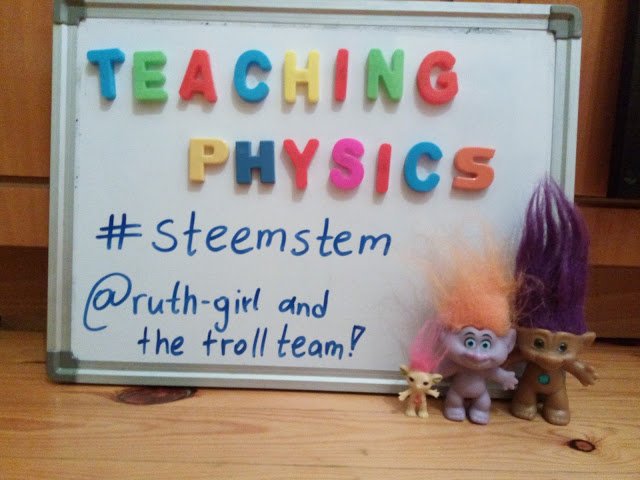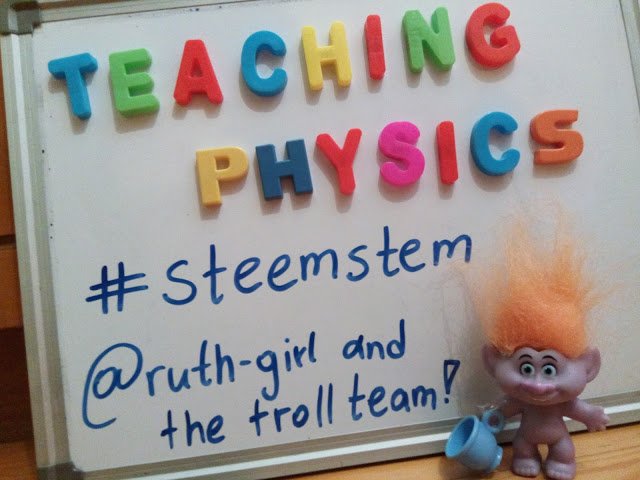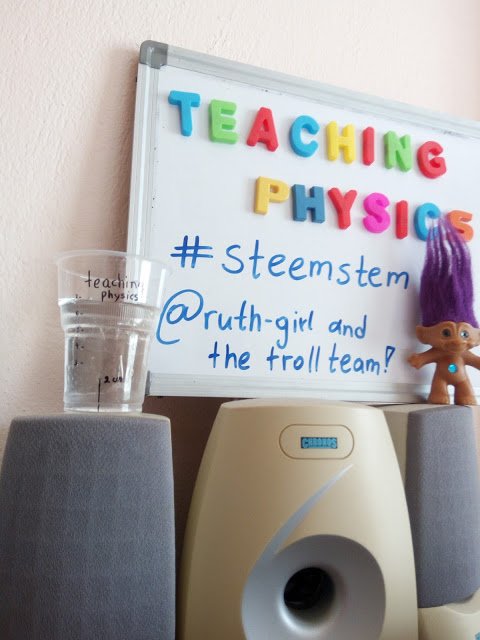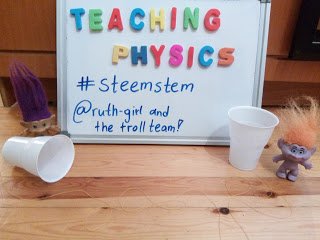Who is in for some troll-physics today? This post is gonna get noisy as we're dealing with sound waves!
I 'm pretty sure that children won't be able to understand how can sound act like a wave, but here are three easy experiments to show them that sound is actually...vibrations.

OBJECTIVES
Teach the basic concept that sound is created and transmitted by vibrations.
DETECTING FORMER KNOWLEDGE
Before teaching our theory, it would be nice to have out students think of what can sound be. Remember, things that the children cannot see or feel are harder to perceive. In order to "warm them up" for what they are about to hear, it's good to bring everyday life experiences up. You can ask the following questions:
-Where does sound come from?
-Why does a speaker vibrate when music is too loud?
-Why does the water in a glass start moving if we leave it on a speaker that plays loud music? (Experiment 1)
After getting them curious, it's time to present the basic theory that: Sound is a wave that travels through a medium (gas, liquid or solid) and is transmitted through the vibrations that move the particles of the specific medium.
And the trolls can take it up from here:

EXPERIMENT 1
Sound is a wave, it is created by vibrations and needs the particles of a medium to be transmitted through it. We start with this one to get our children curious.
Materials:
- a speaker
- a glass
- water
Procedure:
- Pour some water in the glass.
- Place it on the speaker.
- Turn the music on and turn it up.

The water will start "dancing" to the music.
Conclusion: Sound creates vibrations that are transmitted from the speaker to the glass and the water molecules inside causing them to move.
EXPERIMENT 2
Sound is a wave, it is created by vibrations and needs the particles of a medium to be transmitted through it.
Materials:
- thread (almost 50 cm)
- metallic forks and spoons
Procedure:
- Tie the forks and spoons to the thread (within such distance that they'll hit on each other).
- Catch one tip with each hand.
- Place the tips over your ears.
- Start moving.

You can hear the clinging sound very loud in your ears.
Conclusion: As the metallic spoons and forks bang on each other, they create vibrations (sound) that are transferred from the thread to our ears.
EXPERIMENT 3
Sound is a wave, it is created by vibrations and needs the particles of a medium to be transmitted through it. This experiment works pretty much like the second one, only you get to engage two children at the same time.
Materials:
- two plastic cups (You can also use tins instead of plastic cups, but it will be more difficult to open the holes in them. Plastic cups are a safer option.)
- thread (almost 2 meters)
- two paper clips
Procedure:
- Make a small hole to the bottom of each cup.
- Put each tip of the thread through the holes.
- Use the paper clips to fix the thread in place (bind them on the tips of the thread after getting it through the holes).
- Place one cup over your mouth and the second one over your friend's ear.
- Stretch the thread and start talking.


When you talk, your friend can hear you.
Conclusion: Sound waves travel through the thread and get to our friend's ear. The thread must be stretched otherwise our friend won't be able to hear us.
Easy, quick and safe, those experiments show very well the basic idea that sound is a wave. This was only a warm-up to get you interested. More details are coming in a future post, so stay tuned!
References
sciencekidsathome.com
ducksters.com
tinanantsou.blogspot.gr_1
tinanantsou.blogspot.gr_2

Thank you for stopping by and giving this post a read. I hope you enjoyed it! If you please, feel free to pay a visit to my blog and check out my short stories along with plenty of educational posts and of course my bizarre natural phenomena series.


Until my next post,
Steem on and keep smiling, people!

